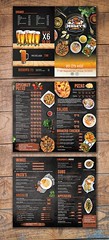
- Click Here To Find Out More About:
- Menu For Restaurants Toronto Canada
Why the Tourist Demographic Is So Desirable
by
Lydia Schrader
The tourist demographic is one that is flush with money, but that is not the sole reason this demographic is so desirable. In order to target a demographic, one must know the basic characteristics such as age, educational level, ethnicity, gender, as well as, income level. Since tourists tend to travel in groups, it can be easy to niche your service to very specific segments of the tourist demographic. Location also has a lot to do with being able to capitalize on a tourist demographic. Certain industries, like hotels and restaurants, cater to a tourist demographic, particularly if they happen to be located in a spot that attracts a lot of tourists. And, of course, the fact that tourists are on the road provides extra opportunities for sales of products and services that the group may typically expect in their home environment, but must buy when they are away from home.
Niching is Easy
If you work with travel agencies and tourist tour groups, you will find that they attract a narrow demographic of tourists for different types of packages. A trip that includes visiting museums and historical sites might attract an older crowd with higher education versus one that is set to visit nightclubs in the hotspots around a city. Depending on the package, you can figure out how to tightly align your marketing campaigns to appeal to the very tight niche available with tourist demographics, making them more likely to convert.
Location Sells
As any business owner knows, a prime location can boost your profits. Another way that you can capitalize on the tourist demographic is to just locate yourself near where they arrive or where they end up congregating. By piggybacking on the hard work of travel companies attracting tourists to your shore, you gain a steady supply of new customers every season with no extra effort on your part. If you can partner with some of these companies as well, you can also get your product placement noticed more than other competing firms. You take advantage of the leads a travel company or tourist industry provides, and they can get something back for helping you make a profit, too.
Solving Problems on the Go
One of the main ways to make sales is to provide solutions to your customers. As a rule, tourists tend to have more problems needing solutions than those that aren t on the road. They need services like currency exchange, replacement of lost items, interpreters, directions, and more. All of these problems are actually sales opportunities. The more you get into the mindset of this demographic the more you will be able to anticipate their needs and provide them with solutions that they will be grateful to be able to buy. You don t have to be a company that only specializes in tourist memorabilia to have something to offer this demographic. You just have to provide a solution they need when they need it and at a price they can afford. Some industries, like the travel insurance business, even sells these solutions long before the traveler even gets on the road.
Lydia Schrader is a freelance marketing consultant who specializes in
travel marketing
. In addition to writing, she has helped several agencies develop
tourism marketing strategies
.
Article Source:
ArticleRich.com